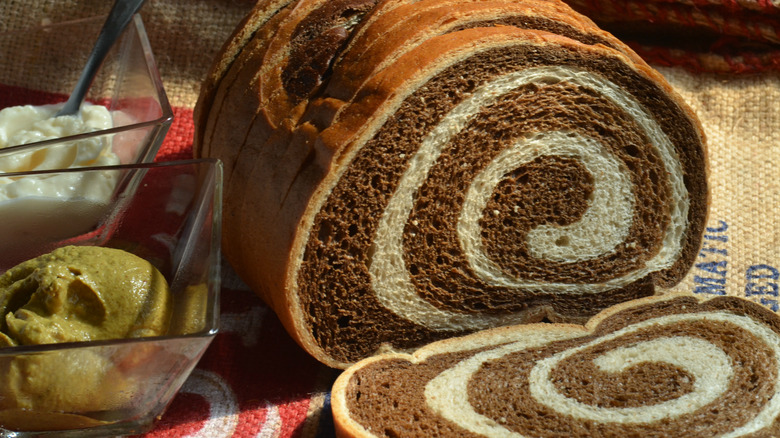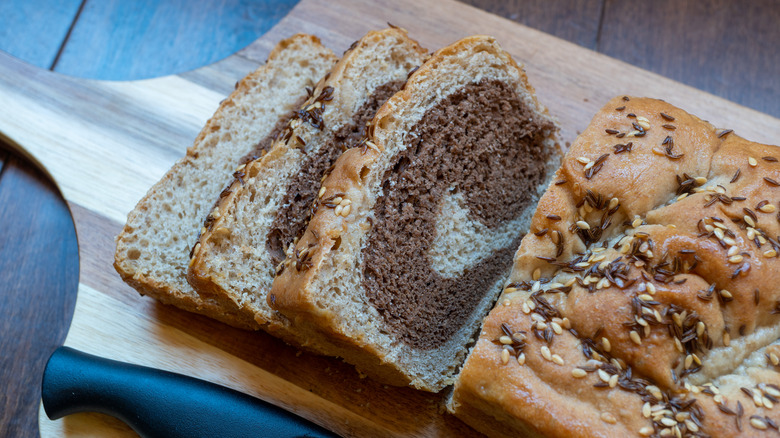Is Marble Rye's Swirl 2 Different Types Of Bread?
There are certain sandwiches that just cannot be served on anything but rye bread. A savory Rueben, a spicy pastrami, and even simple tuna fish all benefit from the tangy and earthy tones of a perfectly baked, perfectly balanced rye bread. The question is, which rye do you choose? You really can't go wrong here. You could go for the classic plain rye, a rye dotted with anisey caraway seeds, or traditional pumpernickel, a bread of German origin made with coarse rye flour that gives it its distinctive dark color. And then, of course, there is marble rye.
Oh, marble rye, you beautiful bread you. Though its crust gives no indication of the contrasting colors within, slice into a loaf, and you'll reveal the glorious swirl within, made from two different doughs baked together into a single loaf. But have bakers gone through the trouble of prepping two different types of bread dough only to lump them together? Well, yes and no. Yes, because each dough could be used to make a different bread. No, because they both originate from the same base. Allow us to explain.
Two doughs, one base
The process of making marble rye is simpler than the finished product would have you believe. You start out with a simple base dough for regular deli rye bread, which has come to its initial rise. The risen dough is then split roughly 60/40. The larger portion is set aside for a second rise, while the smaller portion gets mixed with molasses, coffee, or cocoa powder to add flavor and color before it, too, is given time to rise. At this stage, were you to bake them separately, you would end up with a loaf of plain rye and a New York-style pumpernickel. However, as they are derived from the same base dough and are eventually combined to make one loaf, we can't really say that the swirl in a marble rye is comprised of two different kinds of bread.
Nailing the swirl is a matter of flattening each dough portion into equal-sized rectangles, layering them atop one another, and then slowly folding it backward, the way you would a Swiss roll. The result should be a loaf with an exterior of plain rye, with no indication of interior marbling. That surprise is saved for after baking, when the bread is warm and steaming, giving the swirl an otherworldly effect ... we may like rye bread a little too much. We make no apologies.

